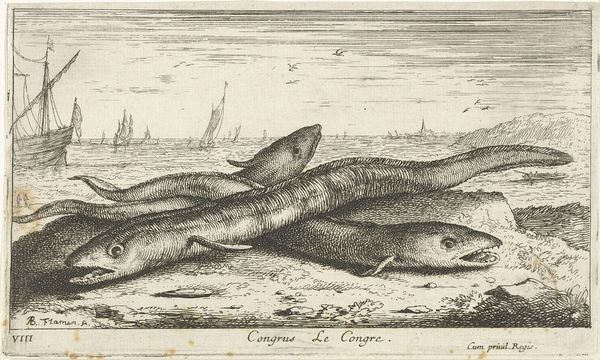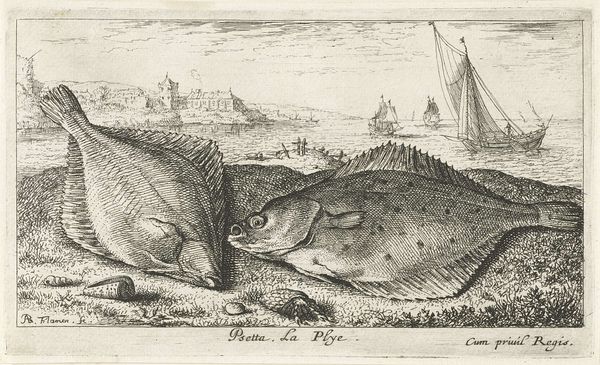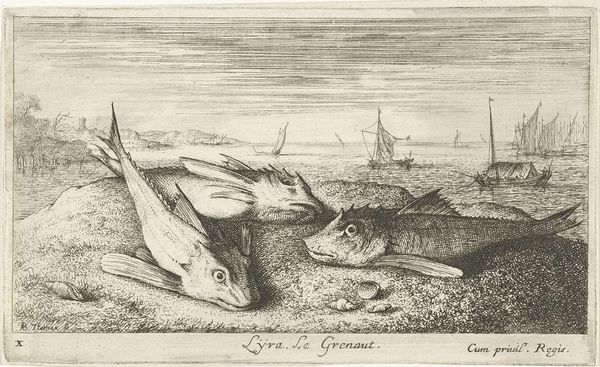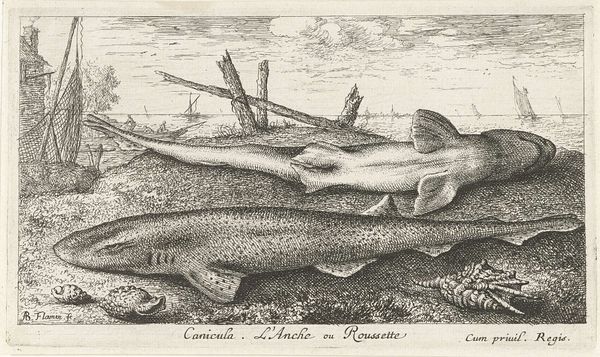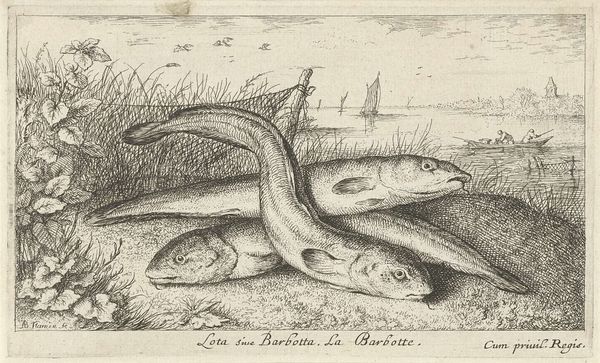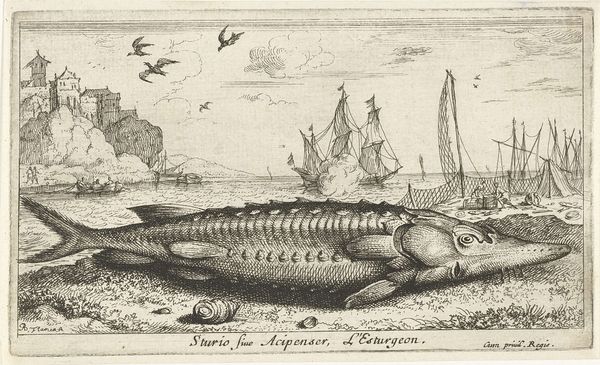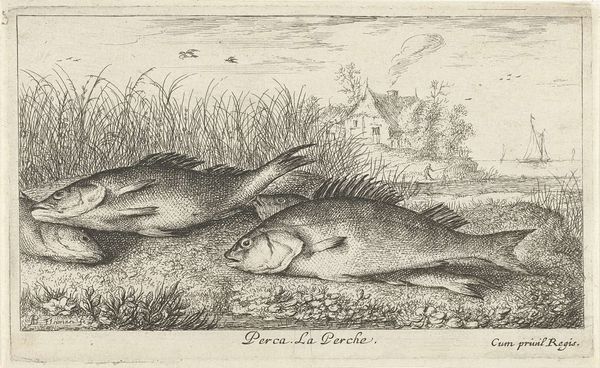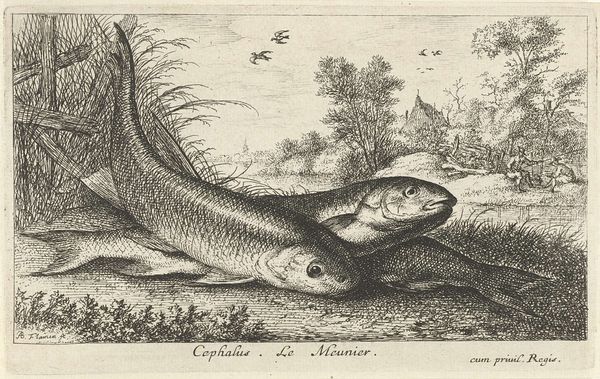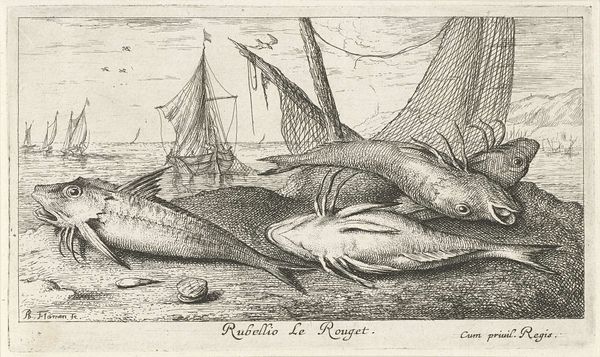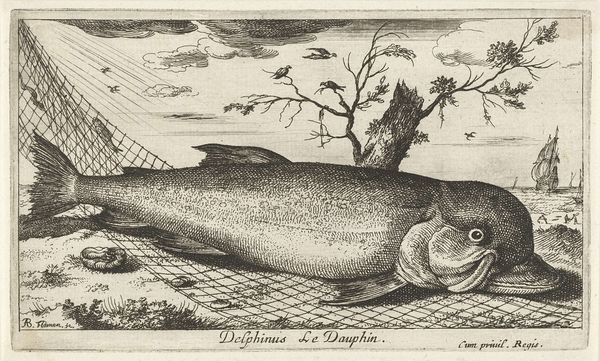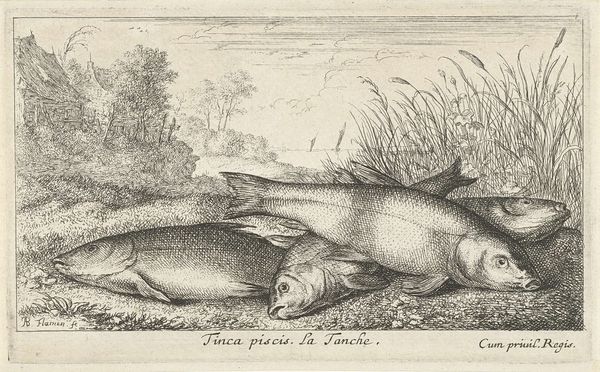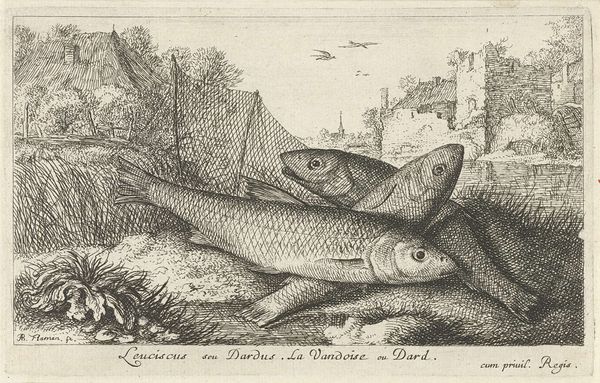
print, engraving
#
dutch-golden-age
# print
#
old engraving style
#
engraving
#
realism
Dimensions: height 103 mm, width 166 mm
Copyright: Rijks Museum: Open Domain
Editor: We’re looking at "Drie gevlekte pietermannen op het strand" by Albert Flamen, created in 1664. It’s an engraving – and I’m immediately struck by the stillness, despite the seascape backdrop with boats and figures; the dead fish feel very monumental somehow. How do you interpret this work? Curator: The socio-political context is crucial here. In 17th-century Dutch art, there's this fascination with representing the natural world, but it's never just straightforward. This piece raises questions about access to resources. Are we meant to consider the fish a commentary on the bounty of the sea? And for whom is this abundance intended, given that it can be reproduced through prints like this one? Editor: So, you're saying it's not just about a realistic depiction of fish? Curator: Realism was certainly a value. But it's mediated by the printmaking process and the fact that these images were circulating, not just passively observed. Think about the burgeoning Dutch maritime power and the economic dependence on the sea. This image plays into a narrative, a certain image of prosperity. Do you notice anything about the composition in relation to its intended audience? Editor: Well, it's a relatively small, reproducible image... so, perhaps meant for a middle-class audience who wouldn’t have experienced fishing firsthand? A way to feel connected to that industry without the grit of it? Curator: Exactly. And what does the "Cum privil. Regis" signify? That would signal exclusivity and a royal seal of approval for wider distribution through commercial markets, impacting the accessibility and perception. Editor: That's fascinating. I always assumed still lifes were straightforward depictions, but it's so much more about societal power dynamics than meets the eye. Curator: Precisely, by investigating how this simple scene becomes meaningful within its cultural and economic landscape, and by whom it can be purchased and shared.
Comments
No comments
Be the first to comment and join the conversation on the ultimate creative platform.
